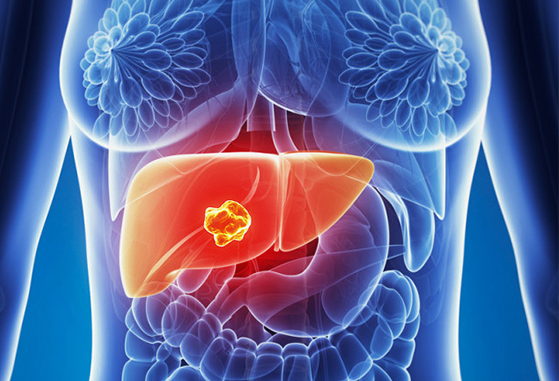ADVERTS
The liver is the largest solid human organ and is located in the upper abdomen, under the ribs, on the right side of the body. It is responsible for using substances absorbed by the intestine and producing proteins that perform various functions in the body, such as: blood clotting and defense against infections. One of its products is bile (stored in the gallbladder and eliminated in the first portion of the small intestine, called the duodenum, through the duct that connects these two structures).

Types of Liver Tumors
Liver tumors, also called hepatic tumors, are divided into benign and malignant, according to their clinical behavior:
ADVERTS
Benign tumors: are not capable of spreading to other regions. Among them, the following stand out: hemangiomas, Focal Nodular Hyperplasia (FNH), osadenomas and cysts.
Malignant tumors: can send metastases to the liver itself, lymph nodes, bones and other organs. They are divided into primary and metastatic.
tumores primários: surgem das células do próprio fígado (hepatocarcinoma) ou dos canais da bile que existem no interior do órgão (colangiocarcinomas). Angiossarcomas e hepatoblastomas tipos raros de tumores hepáticos. O hepatocarcinoma surge das células do fígado, chamados hepatócitos. Sua incidência no mundo todo é muito alta, com cerca de 500.000 novos casos diagnosticados ao ano.
tumores metastáticos: mais freqüentes, pois o fígado é uma sede comum de metástases dos vários tipos de cânceres de praticamente todos os órgãos do corpo humano. As mais comuns são: as de câncer de intestino (cólon e reto) e de tumores neuroendócrinos, cujo tratamento sempre que possível é cirúrgico. Recentemente, casos selecionados de metástases hepáticas de outros órgãos, tais como sarcomas, tumores de rim, mama, melanoma, papila duodenal, tumores ginecológicos, e até mesmo de câncer gástrico têm sido considerados para tratamento cirúrgico.
Diagnosis
The diagnosis of gastric cancer is carried out by combining imaging tests (ultrasound, computed tomography or nuclear magnetic resonance) and laboratory tests (measurement of Alphafeto-protein – a substance produced by most of these tumors). Occasionally, a biopsy of suspicious lesions may be necessary.
PET-CT is useful in staging and therapeutic decisions in some cases.
Symptoms
ADVERTS
The main symptoms include: weight loss, increased abdominal volume (accumulation of fluid inside the abdomen – ascites) and jaundice (yellowing of the eyes and skin due to the accumulation of bilirubin in the body).
Treatment
The treatment of Hepatocellular carcinoma depends on the staging of the tumor (extent of the lesion in the liver and the presence or absence of metastases) and the patient's clinical conditions, especially liver function.
As in many cases there is associated cirrhosis, treatment must take this factor into account. Therefore, it is essential that this treatment is carried out in a multidisciplinary environment from the beginning, where it is discussed jointly between the Oncological Surgeon, the Clinical Oncologist, the Interventional Radiologist, Radiotherapist, Liver Transplant Team, Nutritionists and Nurses.
Os principais fatores de risco para esta doença são: cirrose hepática, causada por infecções virais tais como a Hepatite B e C e o abuso de álcool; hepatite autoimune; hepatite relacionada ao acúmulo de gordura no fígado (esteatose hepática), relacionada à obesidade; hipotireoidismo e síndrome metabólica.
